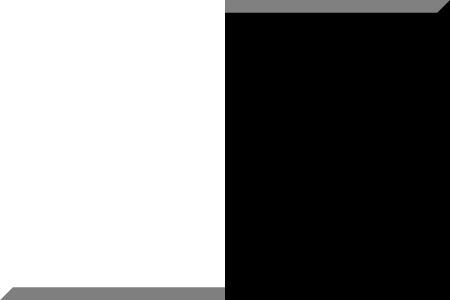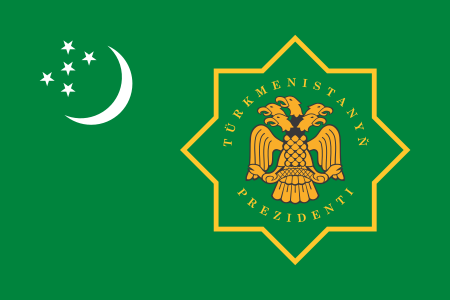Thermoforming
|
Read other articles:

Voce principale: Sportliche Vereinigung Blau-Weiß 1890. Sportliche Vereinigung Blau-Weiß 1890Stagione 1989-1990Sport calcio Squadra Blau-Weiß Berlin Allenatore Bernd Schumm (1ª-19ª) Horst Ehrmantraut (20ª) Bernd Schumm (21ª-24ª) Horst Ehrmantraut (25ª-38ª) 2. Bundesliga9º posto Coppa di GermaniaSecondo turno Maggiori presenzeCampionato: Kutschera (37)Totale: Kutschera (40) Miglior marcatoreCampionato: Adler (11)Totale: Adler (14) StadioStadio Olimpico Maggior numero di spettatori…

Державний комітет телебачення і радіомовлення України (Держкомтелерадіо) Приміщення комітетуЗагальна інформаціяКраїна УкраїнаДата створення 2003Керівне відомство Кабінет Міністрів УкраїниРічний бюджет 1 964 898 500 ₴[1]Голова Олег НаливайкоПідвідомчі орг�…

2016年美國總統選舉 ← 2012 2016年11月8日 2020 → 538個選舉人團席位獲勝需270票民意調查投票率55.7%[1][2] ▲ 0.8 % 获提名人 唐納·川普 希拉莉·克林頓 政党 共和黨 民主党 家鄉州 紐約州 紐約州 竞选搭档 迈克·彭斯 蒂姆·凱恩 选举人票 304[3][4][註 1] 227[5] 胜出州/省 30 + 緬-2 20 + DC 民選得票 62,984,828[6] 65,853,514[6] 得…

2016年美國總統選舉 ← 2012 2016年11月8日 2020 → 538個選舉人團席位獲勝需270票民意調查投票率55.7%[1][2] ▲ 0.8 % 获提名人 唐納·川普 希拉莉·克林頓 政党 共和黨 民主党 家鄉州 紐約州 紐約州 竞选搭档 迈克·彭斯 蒂姆·凱恩 选举人票 304[3][4][註 1] 227[5] 胜出州/省 30 + 緬-2 20 + DC 民選得票 62,984,828[6] 65,853,514[6] 得…

土库曼斯坦总统土库曼斯坦国徽土库曼斯坦总统旗現任谢尔达尔·别尔德穆哈梅多夫自2022年3月19日官邸阿什哈巴德总统府(Oguzkhan Presidential Palace)機關所在地阿什哈巴德任命者直接选举任期7年,可连选连任首任萨帕尔穆拉特·尼亚佐夫设立1991年10月27日 土库曼斯坦土库曼斯坦政府与政治 国家政府 土库曼斯坦宪法 国旗 国徽 国歌 立法機關(英语:National Council of Turkmenistan) 土�…

American racing driver (born 1996) NASCAR driver Austin Wayne SelfSelf at Daytona International Speedway in 2017Born (1996-03-05) March 5, 1996 (age 28)Austin, Texas, U.S.NASCAR Xfinity Series careerBest finish108th (2022) NASCAR Craftsman Truck Series career147 races run over 8 years2023 position70thBest finish12th (2018)First race2016 NextEra Energy Resources 250 (Daytona)Last race2022 Lucas Oil 150 (Phoenix) Wins Top tens Poles 0 15 0 Statistics current as of November 5, 2023. Austin Way…

قصة ليزي الصنف دراما - رعب الموضوع تشاهد ليزي مقتل زوجها الكاتب وترفض التخلي عن أعماله مأخوذ عن قصة ليزي تاريخ الصدور 4 يونيو 2021 (الولايات المتحدة) مدة العرض (موسم واحد) 8 حلقات 50-52 دقيقة للحلقة الواحدة البلد تشيلي - الولايات المتحدة اللغة الأصلية الإنجليزية مواقع التصوير من…

Здание бывшей Главной почтовой дирекции Ганновера Гла́вная почто́вая дире́кция (нем. Oberpostdirektion; OPD; ГПД) — административная единица и орган почтового управления среднего звена в Германии. Впервые дирекции были созданы в 1850 году в Пруссии. После Второй мировой войны Г�…

AH-1Z Viper Jenis Helikopter Serang Negara asal Amerika Serikat Pembuat Bell Helicopter Penerbangan perdana 8 Desember 2000 Pengenalan September 2010 Status Aktif Pengguna utama Marinir Amerika Serikat Jumlah 195 Harga satuan US$27 Juta[1] US$31 million (new built)[2] Dikembangkan dari Bell AH-1 SuperCobra Bell AH-1Z Viper adalah helikopter tempur serang bermesin ganda yang berbasis pada AH-1W SuperCobra, helikopter - helikopter tersebut merupakan pengembangan dari Uni…

Qazaqstan Superkubogy 2023OLIMPBET-Қазақстан Суперкубогы 2023 Competizione Qazaqstan Superkubogy Sport Calcio Edizione 16ª Organizzatore KFF Date 25 febbraio 2023 Luogo Astana Partecipanti 2 Formula Gara unica Impianto/i Astana Arena Risultati Vincitore Astana(6º titolo) Secondo Ordabasy Cronologia della competizione 2022 2024 Manuale La Qazaqstan Superkubogy 2023 è stata la sedicesima edizione della Supercoppa kazaka di calcio, svoltasi all'Astana Arena di Astana tra Asta…

Extinct Utian language of California RumsenSan CarlosNative toUnited StatesRegionCaliforniaEthnicityRumsen peopleExtinctMay 21st, 1939, with the death of Isabel Meadows[1]Language familyYok-Utian UtianCostanoanSouthernRumsenWriting systemLatinLanguage codesISO 639-3(included in Southern Ohlone [css])Glottologrums1243 Mission San Carlos Borroméo de Carmelo, where many Rumsen were brought to live in the Mission Era. The Rumsen language (also known as Rumsien, San Carlos Costanoan and…

Collecchio Baseball ClubBaseball Segni distintiviColori socialiBianco, blu e grigio Simbolila C di Collecchio Dati societariCittàCollecchio Nazione Italia FederazioneFIBS Fondazione1973 Presidente Allenatore PalmarèsTitoli nazionaliCoppa Italia Serie A Federale 2017 Impianto di giocoCentro Sportivo Giannino Zinelli 2000 posti Il Collecchio Baseball Club (CBC) è una società di baseball e softball militante nel campionato italiano di baseball in serie A e nel campionato italiano di softba…

1996 song by Chisato Moritaka Let's Go!Single by Chisato Moritakafrom the album Peachberry LanguageJapaneseB-sideLet's Go! IIBōttoshite MiyouReleasedFebruary 25, 1997 (1997-02-25)Recorded1996GenreJ-poppop rockLength4:28LabelOne Up MusicSongwriter(s)Chisato MoritakaHiromasa IjichiProducer(s)Yukio SetoChisato Moritaka singles chronology Gin'iro no Yume (1996) Let's Go! (1997) Sweet Candy (1997) Let's Go! EPEP by Chisato MoritakaReleasedFebruary 25, 1997 (1997-02-…

9th episode of the 4th season of The Office Local AdThe Office episodeThe Dunder Mifflin graphic created by Pam for the Local AdEpisode no.Season 4Episode 9Directed byJason ReitmanWritten byB. J. NovakFeatured musicChariots of Fire by VangelisCinematography byRandall EinhornEditing byDavid RogersProduction code409Original air dateOctober 25, 2007 (2007-10-25)[1]Guest appearances Kyle Bornheimer as Adman Andy Buckley as David Wallace Tim Kang as Koh Episode chronology …

Primera División de Costa Rica 1934 Competizione Primera División de Costa Rica Sport Calcio Edizione 14ª Organizzatore FEDEFUTBOL Date dal 1934al 1934 Luogo Costa Rica Partecipanti 8 Risultati Vincitore La Libertad(4º titolo) Statistiche Incontri disputati 54 Gol segnati 158 (2,93 per incontro) Cronologia della competizione 1933 1935 Manuale La Primera División costaricana del 1934, quattordicesima edizione della massima serie del campionato costaricano di calcio, …

Award for supporting performer in a television series Children's and Family Emmy Award for Outstanding Supporting Performance in a Preschool, Children's or Young Teen ProgramAwarded forOutstanding Supporting Performance in a Preschool, Children's or Young Teen ProgramCountryUnited StatesPresented byAcademy of Television Arts & SciencesFirst awarded2022Currently held byAdeel Akhtar, Sweet Tooth (2023)Websitetheemmys.tv/childrens/ The Children's and Family Emmy Award for Outstanding Supporting…

Abia Abia merupakan sebuah negara bagian yang terletak paling selatan di Nigeria. Didirikan pada tahun 1991 setelah berpisah dengan Imo. Ibu kota negara bagian ini ialah Umuahia. Negara bagian ini memiliki luas wilayah 6.320 km². Dengan memiliki jumlah penduduk sebanyak 4.222.476 jiwa (2005). Administrasi Urban utama di negara bagian ini ditunjukkan sebagai berikut: Aba (merupakan pusat komersial utama di bagian barat daya Nigeria) Umuahia Arochukwu Abiriba Item Nbawsi Ohafia Omoba Isuikwu…
Contract law Formation Capacity Offer and acceptance Meeting of the minds2 Abstraction principle4,5 Posting rule1 Mirror image rule Invitation to treat Firm offer Consideration1,4 Implication-in-fact Collateral contract Defences Misrepresentation Mistake Threats and unequal bargaining power Illegality and public policy Unconscionability Culpa in contrahendo2 Force majeure Frustration of purpose Impossibility Impracticability Hardship Set-off Illusory promise1 Statute of frauds1 Non est factum1 U…

Journal de physique, de chimie, d'histoire naturelle et des arts País Francia Idioma francésCategoría CienciasAbreviatura J. Phys. Chim. Hist. Nat. ArtsFundación Desde 1771 hasta 1823CirculaciónISSN 1770-6483Página web oficial[editar datos en Wikidata] El Journal de physique, de chimie, d'histoire naturelle et des arts (abreviado J. Phys. Chim. Hist. Nat. Arts y literalmente Diario de física, de química, de historia natural y de las artes),[1] fue una revista científica…

In statistics, econometrics, epidemiology, genetics and related disciplines, causal graphs (also known as path diagrams, causal Bayesian networks or DAGs) are probabilistic graphical models used to encode assumptions about the data-generating process. Causal graphs can be used for communication and for inference. They are complementary to other forms of causal reasoning, for instance using causal equality notation. As communication devices, the graphs provide formal and transparent representatio…



